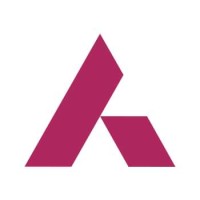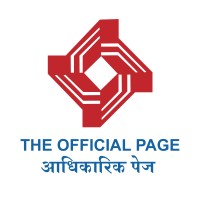
Axis Bank Company Cyber Security Posture
axisbank.comAxis Bank is the third largest private sector bank in India. The Bank offers the entire spectrum of financial services to customer segments covering Large and Mid-Corporates, MSME, Agriculture and Retail Businesses. The Bank has a large footprint of 5000 domestic branches (including extension counters) with 15,751 ATMs & cash recyclers spread across the country. The Bank has 6 Axis Virtual Centres with over 1,500 Virtual Relationship Managers as on 31st March 2023. The Overseas operations of the Bank are spread over eight international offices with branches in Singapore, Dubai (at DIFC), and Gift City-IBU; representative offices in Dhaka, Dubai, Abu Dhabi, Sharjah and an overseas subsidiary in London, UK. The international offices focus on Corporate Lending, Coverage Business, Trade Finance, Syndication, Investment Banking, Liability Businesses, and Private Banking/Wealth Management offerings. Axis Bank is one of the first new generation private sector banks to have begun operations in 1994. The Bank was promoted in 1993, jointly by Specified Undertaking of Unit Trust of India (SUUTI) (then known as Unit Trust of India), Life Insurance Corporation of India (LIC), General Insurance Corporation of India (GIC), National Insurance Company Ltd. (NIC), The New India Assurance Company Ltd. (NIA), The Oriental Insurance Company Ltd. (OIC), and United India Insurance Company Ltd. (UIIC). The shareholding of Unit Trust of India was subsequently transferred to SUUTI, an entity established in 2003. GIC, NIC, NIA, OIC, UIIC have been reclassified from promoter category to public category. As on March 31, 2023, SUUTI and LIC are the promoters of the Bank. With a balance sheet size of Rs. 13,17,326 crores as on 31st March 2023, Axis Bank has achieved consistent growth and with a 5-year CAGR (2017-18 to 2022-23) of 14% each in Total Assets & Advances and 16% in Deposits.
Axis Bank Company Details
axis-bank
91929 employees
2742737.0
522
Banking
axisbank.com
Scan still pending
AXI_7082009
In-progress
Between 800 and 900
This score is AI-generated and less favored by cyber insurers, who prefer the TPRM score.
 Axis Bank Global Score
Axis Bank Global Score.png)

Axis Bank Company Scoring based on AI Models
| Model Name | Date | Description | Current Score Difference | Score |
|---|---|---|---|---|
| AVERAGE-Industry | 03-12-2025 | This score represents the average cybersecurity rating of companies already scanned within the same industry. It provides a benchmark to compare an individual company's security posture against its industry peers. | N/A | Between 800 and 900 |
Axis Bank Company Cyber Security News & History
| Entity | Type | Severity | Impact | Seen | Url ID | Details | View |
|---|---|---|---|---|---|---|---|
| Axis Bank | Breach | 100 | 5 | 10/2016 | AXI173851123 | Link | |
Rankiteo Explanation : Attack threatening the organization’s existenceDescription: Several Indian banks have taken drastic steps in response to a security breach that may have compromised up to 3.25 million debit cards—or 0.5% of the approximately 700 million debit cards that Indian banks have issued. The financial institution is Hitachi Payment Services, a subsidiary of Hitachi Ltd. that oversees ATM network processing for Yes Bank Ltd., according to banking industry insiders. After that, the State Bank of India quickly disabled a few clients' debit cards, and it was currently replacing those cards to stop fraud. The top three private sector lenders, ICICI Bank, HDFC Bank, and Axis Bank, each stated in separate announcements that there may have been card account breaches following usage at non-bank ATMs. Additionally, certain consumers' debit cards are being reissued by Standard Chartered's Indian division. | |||||||
Axis Bank Company Subsidiaries

Axis Bank is the third largest private sector bank in India. The Bank offers the entire spectrum of financial services to customer segments covering Large and Mid-Corporates, MSME, Agriculture and Retail Businesses. The Bank has a large footprint of 5000 domestic branches (including extension counters) with 15,751 ATMs & cash recyclers spread across the country. The Bank has 6 Axis Virtual Centres with over 1,500 Virtual Relationship Managers as on 31st March 2023. The Overseas operations of the Bank are spread over eight international offices with branches in Singapore, Dubai (at DIFC), and Gift City-IBU; representative offices in Dhaka, Dubai, Abu Dhabi, Sharjah and an overseas subsidiary in London, UK. The international offices focus on Corporate Lending, Coverage Business, Trade Finance, Syndication, Investment Banking, Liability Businesses, and Private Banking/Wealth Management offerings. Axis Bank is one of the first new generation private sector banks to have begun operations in 1994. The Bank was promoted in 1993, jointly by Specified Undertaking of Unit Trust of India (SUUTI) (then known as Unit Trust of India), Life Insurance Corporation of India (LIC), General Insurance Corporation of India (GIC), National Insurance Company Ltd. (NIC), The New India Assurance Company Ltd. (NIA), The Oriental Insurance Company Ltd. (OIC), and United India Insurance Company Ltd. (UIIC). The shareholding of Unit Trust of India was subsequently transferred to SUUTI, an entity established in 2003. GIC, NIC, NIA, OIC, UIIC have been reclassified from promoter category to public category. As on March 31, 2023, SUUTI and LIC are the promoters of the Bank. With a balance sheet size of Rs. 13,17,326 crores as on 31st March 2023, Axis Bank has achieved consistent growth and with a 5-year CAGR (2017-18 to 2022-23) of 14% each in Total Assets & Advances and 16% in Deposits.
Access Data Using Our API

Get company history
.png)
Axis Bank Cyber Security News
Guarding the Digital Fortress
This modern interpretation is backed by the RBI's master directions, which delineate clear responsibilities for CISOs in India's banking sector.
RBI Fines ICICI, Axis, 3 Other Key Banks Over Lack Of Regulatory Compliances
The Reserve Bank has fined five banks, including ICICI (Rs 97.80 lakh) and Bank of Baroda (Rs 61.40 lakh), for regulatory non-compliance. Other ...
Cyber Security and Banking: Know the importance, challenges & tips
The main goal of cyber security in the banking sector is to ensure the integrity, confidentiality and availability of sensitive financial data.
Sanskrit Meets Cybersecurity: How Axis Bank is Reinventing Password Protection
Axis Bank's innovative Sanskrit Password campaign combines the revival of an ancient language with enhanced online security, ...
RBI imposes penalties on ICICI Bank, Axis Bank and three other lenders over compliance issues
The RBI imposed fines against these banks over compliance issues pertaining to cybersecurity, KYC processes and customer service. The bank ...
RBI imposes fines totalling ₹2.5 crore on ICICI Bank, Axis Bank, three others for compliance failures
RBI has imposed fines amounting to ₹2.5 crore on ICICI Bank, Axis Bank, and three others for compliance failures.
RBI Imposes Fines on ICICI, Axis and Others Over Regulatory Violations
RBI Imposes Fines on ICICI, Axis and Others Over Regulatory Violations · ICICI Bank Fined ₹97.80 Lakh for Cybersecurity and Billing Lapses.
RBI Slaps Rs2.52 Crore Penalty on ICICI Bank, Axis Bank, BoM, IDBI Bank and BoB
Axis Bank was penalised Rs29.60 lakh for non-compliance with RBI directions on unauthorised operation of internal or office accounts. The Bank ...
Axis Bank champions Sanskrit in new cybersecurity initiative for India’s 78th Independence Day
The initiative introduces a fresh approach by Axis Bank, intertwining Sanskrit with cybersecurity in honour of India's 78th Independence Day.

Axis Bank Similar Companies

Comerica Bank
Comerica Incorporated (NYSE: CMA) is a financial services company headquartered in Dallas, Texas, strategically aligned by the Business Bank, the Retail Bank, and Wealth Management. The Business Bank provides companies of all sizes with an array of credit and non-credit financial products and servic

Sumitomo Mitsui Trust Bank
Sumitomo Mitsui Trust Bank, Limited (SuMi TRUST) was established through the merger of The Sumitomo Trust and Banking Co., Ltd. with Chuo Mitsui Trust and Banking, Ltd. and Chuo Mitsui Asset Trust and Banking Company, Ltd. on April 1, 2012. SuMi TRUST is Japan's largest trust bank, with AUM of more

Banco de la Provincia de Buenos Aires
Desde 1822 somos el banco impulsor del desarrollo de la Provincia de Buenos Aires y su gente, invirtiendo en talento y creando valor para nuestros casi 5 millones de clientes. Con más de 400 localizaciones distribuidas entre la Ciudad Autónoma y la Provincia de Buenos Aires y la Banca Internet Pr

Indian Bank
Established in 1907, today, we are a family of over 141 million customers and 40000 staff members. With a 100% CBS network of 6000+ branches and 5400+ ATMs and BNAs, Indian Bank has a wide national footprint, besides foreign branches in Singapore and Colombo, along with arrangements with 640 Oversea

Central Bank of India
Welcome to the official LinkedIn page of Central Bank of India. Central Bank of India offers a wide range of products and services for every segment. Please join us to know more about our best products & services, attractive offers and the latest updates. We invite & value your active participatio

National Bank of Canada
At National Bank, we believe in the potential of each individual, and that even the smallest gestures can make a big difference. When we help others accomplish their projects, we help empower them and the community at large. We try to make a difference through innovation, but above all, by puttin

Frequently Asked Questions
Explore insights on cybersecurity incidents, risk posture, and Rankiteo's assessments.
Axis Bank CyberSecurity History Information
How many cyber incidents has Axis Bank faced?
Total Incidents: According to Rankiteo, Axis Bank has faced 1 incident in the past.
What types of cybersecurity incidents have occurred at Axis Bank?
Incident Types: The types of cybersecurity incidents that have occurred incident Breach.
How does Axis Bank detect and respond to cybersecurity incidents?
Detection and Response: The company detects and responds to cybersecurity incidents through incident response plan activated with Yes and containment measures with Disabling affected debit cards and remediation measures with Reissuing debit cards and communication strategy with Public announcements by affected banks.
Incident Details
Can you provide details on each incident?

Incident : Data Breach
Title: Security Breach Compromises 3.25 Million Debit Cards in India
Description: Several Indian banks have taken drastic steps in response to a security breach that may have compromised up to 3.25 million debit cards—or 0.5% of the approximately 700 million debit cards that Indian banks have issued.
Type: Data Breach
Attack Vector: Compromised ATM network processing
Vulnerability Exploited: ATM network processing
Motivation: Financial Gain
What are the most common types of attacks the company has faced?
Common Attack Types: The most common types of attacks the company has faced is Breach.
How does the company identify the attack vectors used in incidents?
Identification of Attack Vectors: The company identifies the attack vectors used in incidents through ATM network processing.
Impact of the Incidents
What was the impact of each incident?

Incident : Data Breach AXI173851123
Data Compromised: Debit card information
Systems Affected: ATM network processing systems
Operational Impact: Reissuing of debit cards
Brand Reputation Impact: Negative impact on customer trust
Identity Theft Risk: High
Payment Information Risk: High
What types of data are most commonly compromised in incidents?
Commonly Compromised Data Types: The types of data most commonly compromised in incidents are Debit card information.
Which entities were affected by each incident?

Incident : Data Breach AXI173851123
Entity Type: Financial Institution
Industry: Financial Services
Location: India
Customers Affected: 3250000

Incident : Data Breach AXI173851123
Entity Type: Financial Institution
Industry: Financial Services
Location: India

Incident : Data Breach AXI173851123
Entity Type: Financial Institution
Industry: Financial Services
Location: India

Incident : Data Breach AXI173851123
Entity Type: Financial Institution
Industry: Financial Services
Location: India

Incident : Data Breach AXI173851123
Entity Type: Financial Institution
Industry: Financial Services
Location: India

Incident : Data Breach AXI173851123
Entity Type: Financial Institution
Industry: Financial Services
Location: India

Incident : Data Breach AXI173851123
Entity Type: Financial Institution
Industry: Financial Services
Location: India
Response to the Incidents
What measures were taken in response to each incident?

Incident : Data Breach AXI173851123
Incident Response Plan Activated: Yes
Containment Measures: Disabling affected debit cards
Remediation Measures: Reissuing debit cards
Communication Strategy: Public announcements by affected banks
What is the company's incident response plan?
Incident Response Plan: The company's incident response plan is described as Yes.
Data Breach Information
What type of data was compromised in each breach?

Incident : Data Breach AXI173851123
Type of Data Compromised: Debit card information
Number of Records Exposed: 3250000
Sensitivity of Data: High
Personally Identifiable Information: Yes
What measures does the company take to prevent data exfiltration?
Prevention of Data Exfiltration: The company takes the following measures to prevent data exfiltration: Reissuing debit cards.
How does the company handle incidents involving personally identifiable information (PII)?
Handling of PII Incidents: The company handles incidents involving personally identifiable information (PII) through was Disabling affected debit cards.
Investigation Status
How does the company communicate the status of incident investigations to stakeholders?
Communication of Investigation Status: The company communicates the status of incident investigations to stakeholders through was Public announcements by affected banks.
Stakeholder and Customer Advisories
Were there any advisories issued to stakeholders or customers for each incident?

Incident : Data Breach AXI173851123
Customer Advisories: Reissuing of debit cards
What advisories does the company provide to stakeholders and customers following an incident?
Advisories Provided: The company provides the following advisories to stakeholders and customers following an incident: was Reissuing of debit cards.
Initial Access Broker
How did the initial access broker gain entry for each incident?

Incident : Data Breach AXI173851123
Entry Point: ATM network processing
Post-Incident Analysis
What were the root causes and corrective actions taken for each incident?
What corrective actions has the company taken based on post-incident analysis?
Corrective Actions Taken: The company has taken the following corrective actions based on post-incident analysis: Reissuing debit cards.
Additional Questions
Impact of the Incidents
What was the most significant data compromised in an incident?
Most Significant Data Compromised: The most significant data compromised in an incident was Debit card information.
What was the most significant system affected in an incident?
Most Significant System Affected: The most significant system affected in an incident was ATM network processing systems.
Response to the Incidents
What containment measures were taken in the most recent incident?
Containment Measures in Most Recent Incident: The containment measures taken in the most recent incident was Disabling affected debit cards.
Data Breach Information
What was the most sensitive data compromised in a breach?
Most Sensitive Data Compromised: The most sensitive data compromised in a breach was Debit card information.
What was the number of records exposed in the most significant breach?
Number of Records Exposed in Most Significant Breach: The number of records exposed in the most significant breach was 325.0.
Stakeholder and Customer Advisories
What was the most recent customer advisory issued?
Most Recent Customer Advisory: The most recent customer advisory issued was was an Reissuing of debit cards.
Initial Access Broker
What was the most recent entry point used by an initial access broker?
Most Recent Entry Point: The most recent entry point used by an initial access broker was an ATM network processing.
What Do We Measure?
















Every week, Rankiteo analyzes billions of signals to give organizations a sharper, faster view of emerging risks. With deeper, more actionable intelligence at their fingertips, security teams can outpace threat actors, respond instantly to Zero-Day attacks, and dramatically shrink their risk exposure window.
These are some of the factors we use to calculate the overall score:
Identify exposed access points, detect misconfigured SSL certificates, and uncover vulnerabilities across the network infrastructure.
Gain visibility into the software components used within an organization to detect vulnerabilities, manage risk, and ensure supply chain security.
Monitor and manage all IT assets and their configurations to ensure accurate, real-time visibility across the company's technology environment.
Leverage real-time insights on active threats, malware campaigns, and emerging vulnerabilities to proactively defend against evolving cyberattacks.




